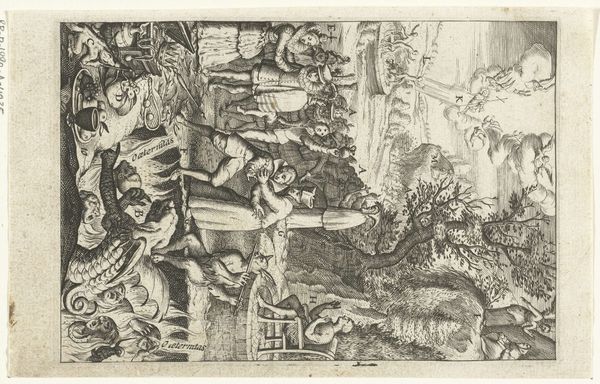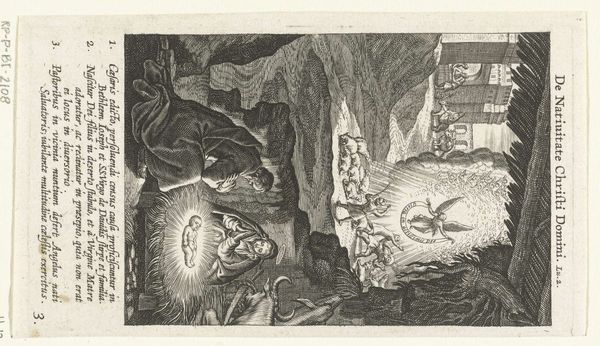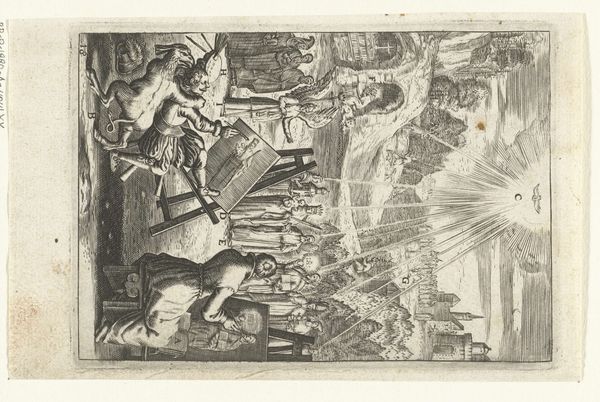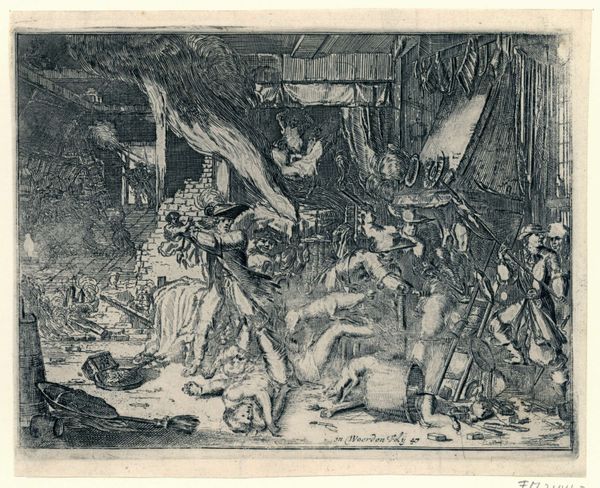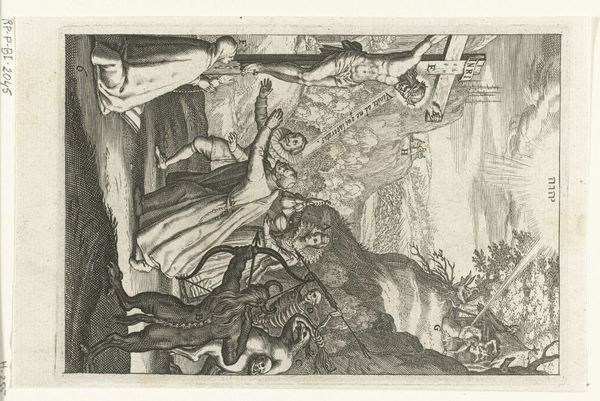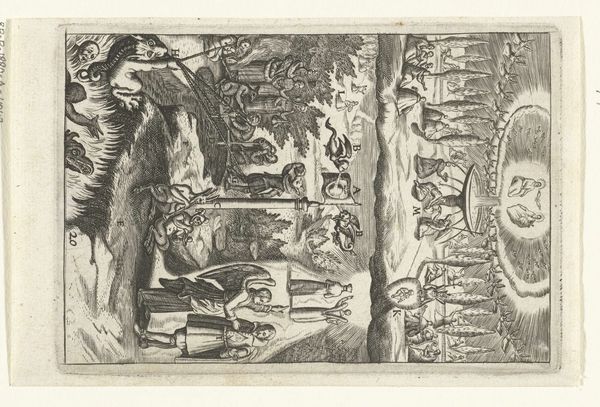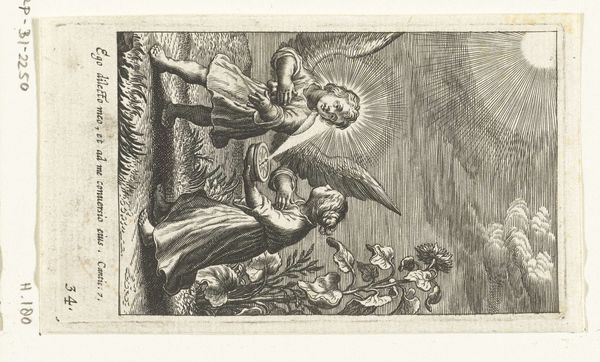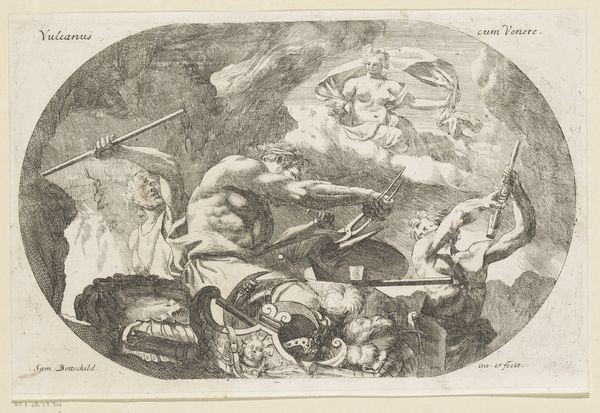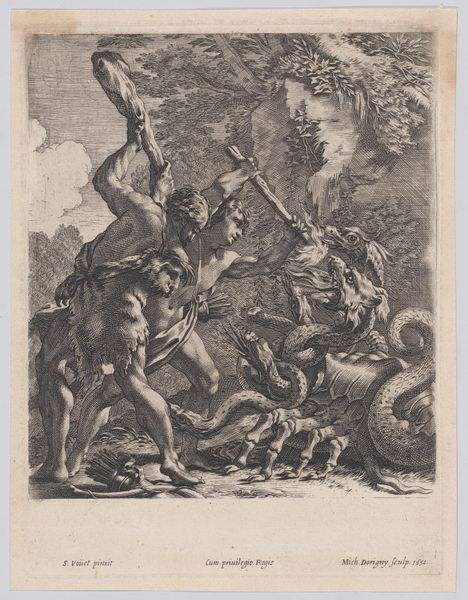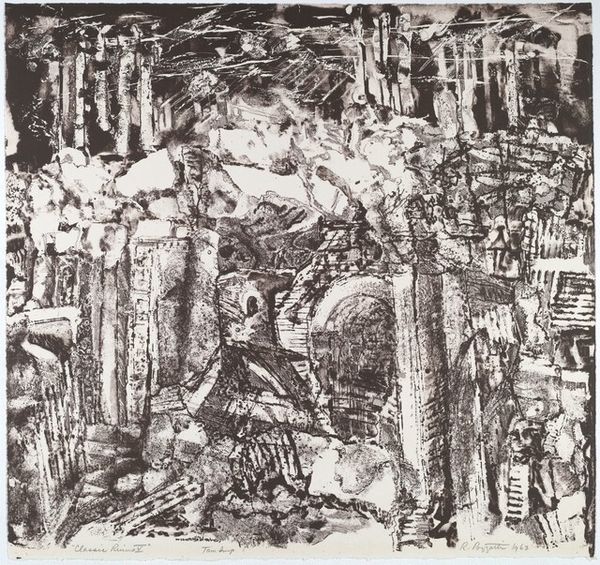
print, engraving
#
allegory
#
baroque
# print
#
old engraving style
#
figuration
#
line
#
history-painting
#
engraving
Dimensions: height 137 mm, width 93 mm
Copyright: Rijks Museum: Open Domain
Curator: What a dense image. There’s so much to unpack. The work is called "Embleem met man die God dankt voor al zijn goede daden," or, "Emblem with a man thanking God for all his good deeds." It’s an engraving, dating back to 1620-1623. Editor: Yes, it has a rather dramatic composition. There is an old engraving style; that dense linework almost makes it hard to distinguish forms at first glance. I immediately wonder about the engraver, who must have invested so much time physically cutting into the plate. Curator: Absolutely. Consider the layers of meaning embedded here. Allegorically, we see a man kneeling in gratitude, seemingly protected by divine intervention from various ills and evils portrayed around him. He’s bathed in beams of light deflecting arrows and fire. It’s the Baroque era at its most didactic. Editor: And what was the role of prints in this era? Were these produced as unique art objects or primarily to distribute specific ideological messages? Considering the time invested, it seems counterintuitive to not create many copies and disperse them to audiences to convey a religious or moral lesson on God's good deeds. Curator: The print medium was crucial for disseminating ideas during this period. This piece certainly speaks to a culture grappling with faith, providence, and earthly struggles. Note how the image presents very tangible fears– war, disease, perhaps poverty represented through stark, almost nightmarish, vignettes surrounding the central, pious figure. Editor: It reminds me of the function of printed pamphlets—rapidly produced and distributed widely, to share stories of sensational events, impart warnings, or promote theological insights. Did the economics of printmaking dictate certain compositional approaches, favouring clear lines over more tonal and chromatic details? Curator: That’s a compelling angle. The graphic clarity achieved through line engraving lends itself well to reproduction, for sure. The visual language resonates, tapping into a shared spiritual consciousness but also, crucially, leveraging recent advances in material processes and dissemination to create, shape and perhaps also, solidify the viewers' belief systems and behavior. Editor: So much craft in such a complex artwork. The scale almost tricks one into believing that this engraving contains many small layers to the picture plane with many complex characters and settings. It is impressive that a religious and cultural lesson about divine blessings and protection could be so skillfully put on display through such technical mastery in an effort of printed material. Curator: I agree; thinking about cultural memory at the time and the act of receiving blessings feels very aligned after really investigating it here today. Editor: Right. It’s almost overwhelming, this flood of gratitude rendered with such care. A lot to take in.
Comments
No comments
Be the first to comment and join the conversation on the ultimate creative platform.
